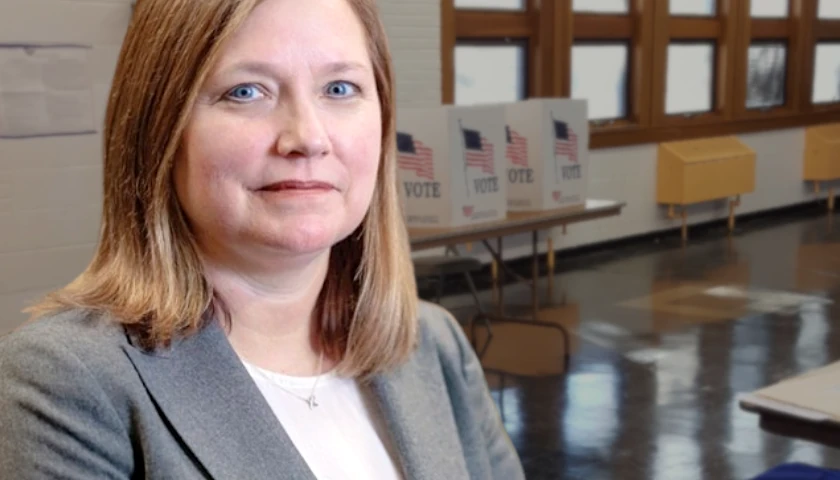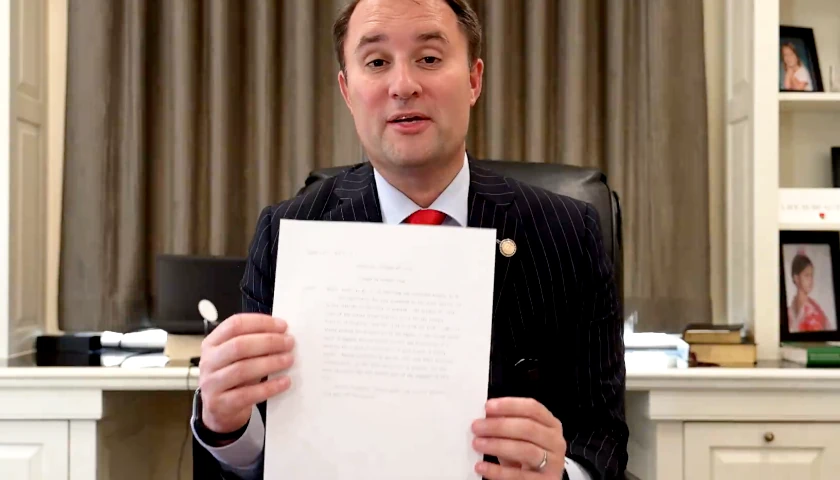by Rachel Sheffield
It seems reasonable that a program designed to assist those with low incomes should go only to low-income households. But the Biden-Harris administration is using a dubious mechanism to get around that expectation in a program designed to help low-income families pay for broadband internet service.
Congress created the Emergency Broadband Benefit Program in 2020, during the COVID-19 pandemic, to provide broadband internet assistance to low-income households.
The program was supposed to last six months, but Congress made it permanent in 2021, renaming it the Affordable Connectivity Program and allocating nearly five times the original funding.
Although funding for the Federal Communications Commission program ran out in the first half of this year, Congress is working to renew it.
To qualify, households must show that they are low income. One way to demonstrate this: A household receives benefits from another means-tested welfare program such as the Lifeline Program or the Affordable Connectivity Program, which provide assistance with phone service and internet service, respectively. Another way to show eligibility: A member of the household receives a Pell Grant or is in a school lunch or breakfast program.
Eligibility through school meal programs is how the Federal Communications Commission is doing an end run around income limits for the broadband program. This is because of something called the Community Eligibility Provision that was included in legislation, the Healthy, Hunger-Free Kids Act of 2010, signed into law by President Barack Obama.
The Community Eligibility Provision allows any school to provide meals to all students if just 25 percent of the students come from low-income households.
The provision also allows an entire school district to qualify for free school meals if 25 percent of students in the district are from low-income homes. (Originally, 40 percent of students in a school or district had to be from low-income households to qualify for the Community Eligibility Provision, but the Biden-Harris administration’s Department of Agriculture last year dropped the threshold to 25 percent.)
USDA also allows districts to group schools together as they see fit to meet the 25 percent threshold, even though the underlying law doesn’t permit districts to gerrymander in this way.
In grouping schools, for example, a district could bring together four schools, two with 50 percent of children from low-income households and two others with no children from low-income households. All children in the four schools would qualify for free meals under the Community Eligibility Provision, because this grouping would meet the 25 percent threshold even though two schools don’t have a single student from a poor household.
The Community Eligibility Provision is bad policy because it provides free school meals to students who don’t need financial assistance. And in some cases, this could happen when all or most students involved are from high-income homes.
And now, the Federal Communications Commission is using the same provision to extend government assistance for broadband service to any household with a child who attends a school that meets the provision. It doesn’t matter whether the household is a low-income one or not.
Like free school meals under the Community Eligibility Provision, you could have a school where all the students are from high-income homes yet all their families qualify for broadband assistance. And this despite benefits for both the meals and broadband programs being intended for low-income households.
On top of this, it’s not clear the FCC has authority to qualify households for the Affordable Connectivity Program through a child’s being enrolled in an eligible school.
The law creating the broadband program states that a household qualifies for the benefit if “at least one member of the household has applied for and been approved to receive benefits under the free and reduced-price lunch program … or the school breakfast program.”
But the Community Eligibility Provision doesn’t require families to apply for school meals or go through an approval process for a child to qualify. In fact, one rationale for CEP, as it’s called, is that the provision eliminates the application process.
The Federal Communications Commission provided flyers that schools may use to promote the Affordable Connectivity Program to families, specifically advertising that having a child in a school with “community eligibility” is sufficient for a household to qualify for the government’s broadband assistance.
Survey data from the FCC indicates that many people enrolled in the Affordable Connectivity Program likely don’t need it: Fully 30 percent of participants said they had both home internet and mobile internet in the year before they enrolled. And 30 percent of participating households also said they were never without internet because they couldn’t afford it in any of the preceding 12 months before they got on the program.
The FCC report doesn’t say whether families enrolled in the Affordable Connectivity Program through “community eligibility” were more likely to fall into these two groups. What is clear, though, is that the Community Eligibility Provision allows people to get on the broadband program regardless of their income level.
Program rolls for the Affordable Connectivity Program have grown substantially over the past two years, jumping from 9 million households in January 2022 to over 23 million households as of February 2024.
If this broadband welfare program continues, Congress should clearly state that households can’t qualify for it through the Community Eligibility Provision.
Even without congressional action, the FCC could clarify that having a child in a “community eligibility” school doesn’t qualify a household for the broadband benefit.
The government’s welfare system needs substantial reform. It should be obvious that programs explicitly designed to provide benefits to low-income Americans should provide those benefits only to low-income households.
Government agencies shouldn’t run programs according to their own whims. Using taxpayer dollars to subsidize households that aren’t in need is a waste of resources and undermines the purpose of means-tested programs.
– – –
Rachel Sheffield is research fellow in welfare and family policy in the Center for Health and Welfare Policy at The Heritage Foundation. Read her research.
Photo “Family using a Tablet” by Kampus Production.









